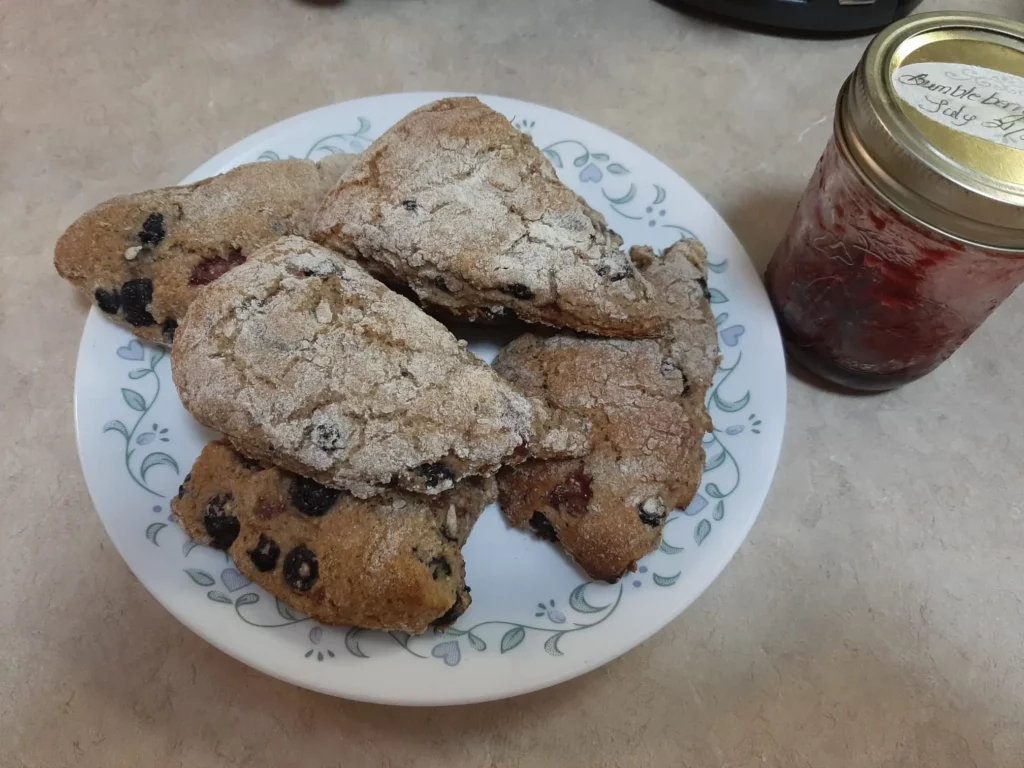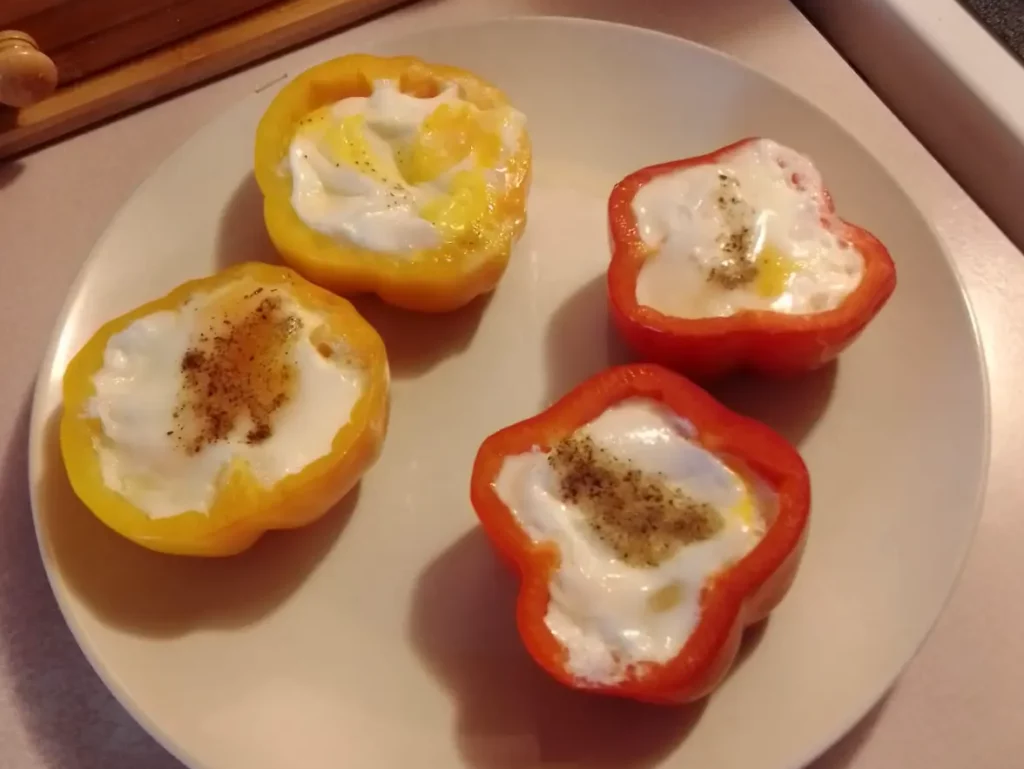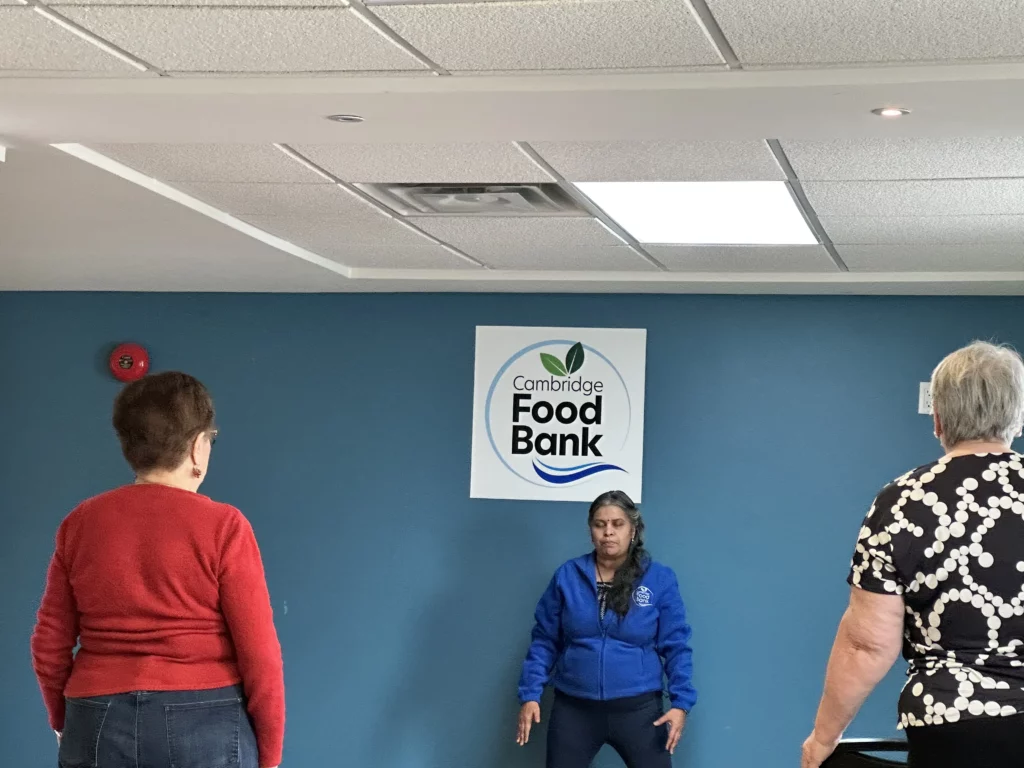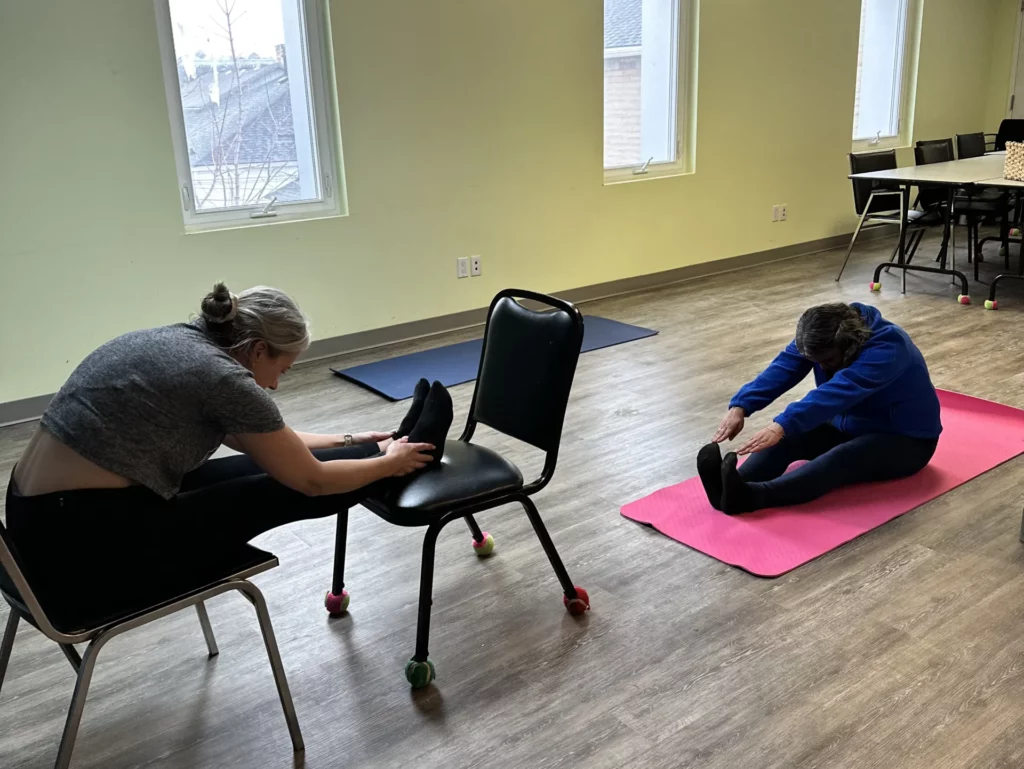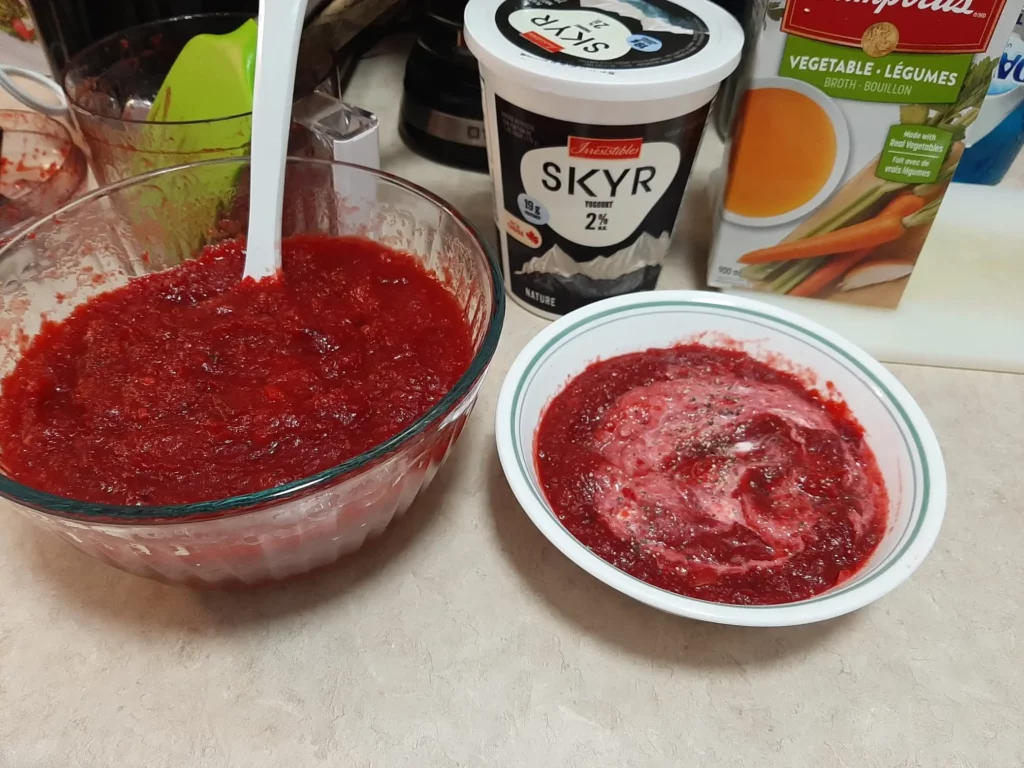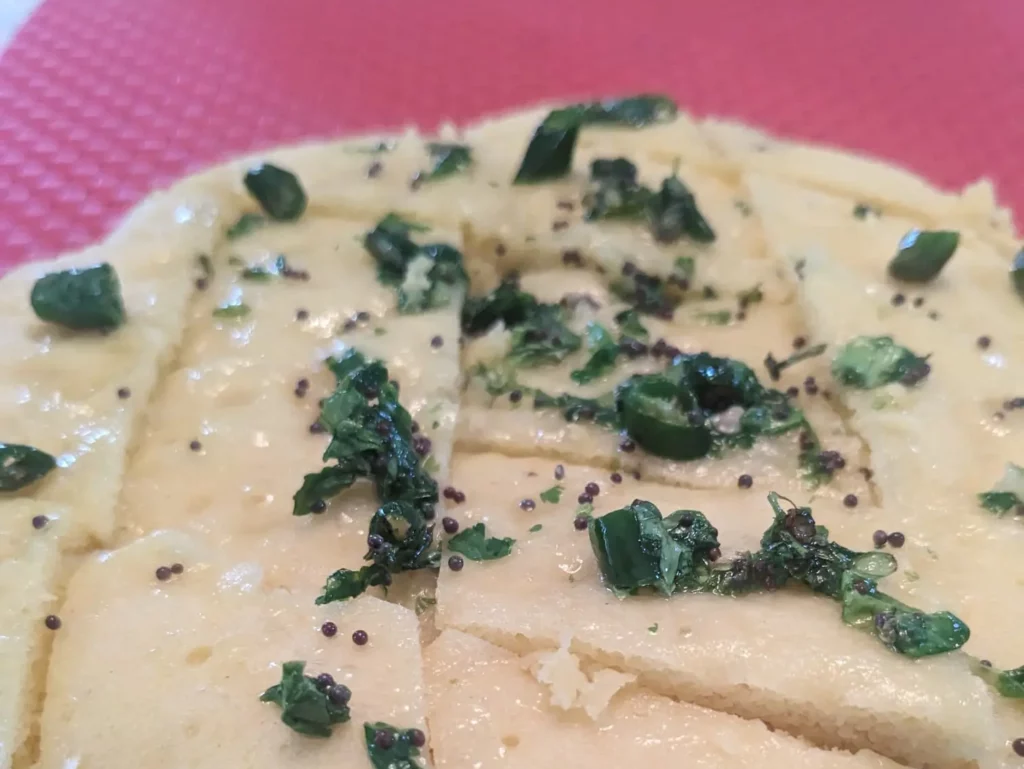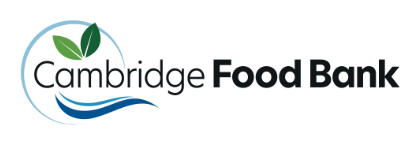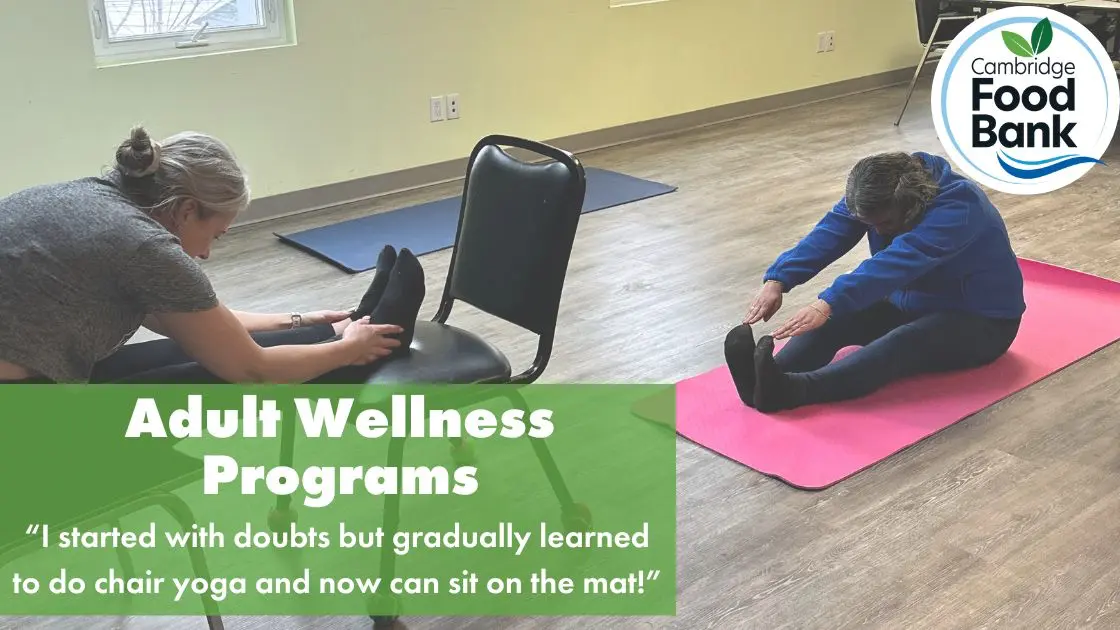More Than a Food Bank: How Wellness Programs Are Feeding the Whole Person
When people picture a food bank, they often think of shelves of canned goods and non-perishable items. But at the Cambridge Food Bank, we are proud to be More Than a Food Bank.
We offer the dignity of choice through our shopping model, providing fresh, nutritious, and culturally diverse food options. In addition, through our wellness programs we offer people hope and the opportunity to heal, grow, and belong.
In 2024, over 850 adults and seniors participated in our free adult and older adults wellness programs, via virtual and in-person sessions in yoga, pilates, cooking classes, nutrition workshops, and caregiver support groups. Thanks to our donors, partners, grants, and volunteers, these programs are free and open to all.
As Chantelle, our Intake Coordinator, shares:
“I love seeing how people feel like they belong here. I’ll see someone come in shy and unsure and within the next few months of becoming a participant of the Cambridge Food Bank they have joined yoga or cooking, and they blossom into a member of the community, they become a part of something, an advocate for building health and belonging through food, education and advocacy.”
From Emergency Help to Lasting Health
Many people first come to the Cambridge Food Bank seeking emergency food assistance. But what they often discover is a whole community of support ready to walk alongside them.
Wellness Hub Participants are not only accessing nutritious food but are also improving their health:
- After attending our Cooking & Nutrition Program, 60% of participants now cook at home four or more times per week (up from 40%)
- Daily fruit and vegetable consumption rose dramatically, with 68% now eating 3–4 servings a day
- 84% of participants now find it easy to read nutrition labels, empowering them to make informed food choices
- After participating in our Movement Programs, balance improved by 36%, stair climbing ability improved by 30%, and daily walking increased by 33
- Stress levels dropped by nearly 40%, and 96% of participants reported feeling a stronger sense of belonging
These small, meaningful changes add up to lasting transformation.
Wellness is for Everyone
Whether it’s learning to manage blood sugar through healthier meals, finding peace through mindful movement, or connecting with others after feeling isolated, our wellness programs create pathways to better living.
They matter to the grandmother who can now lift her arms over her head again.
They matter to the parent who learned how to prepare healthy meals for their family.
They matter to every individual who realized that health, dignity, and connection are within reach.
As Chai Maybhate, our Health Promoter, says:
“Together, we grow stronger. You don’t have to do this alone—we’re here to support, uplift, and walk alongside you every step of the way. I will meet you where you are. One step at a time!!”
Let’s Keep Growing
Together, we are building health, hope, and belonging through every meal shared, every yoga pose learned, and every recipe tried.
Are you—or someone you know—looking to feel better, eat well, and connect with others?
Click here to check out our free Adult and Older Adult Wellness Programs.
Participants Photos

